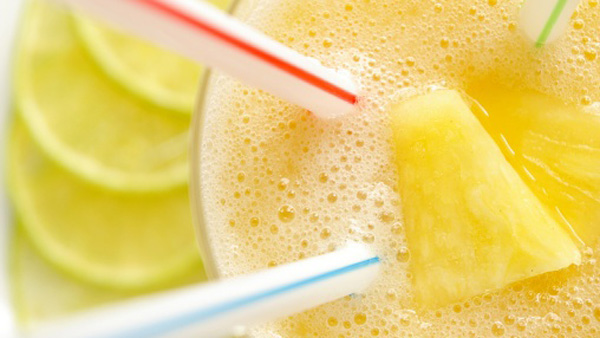Traditional Juicing vs. Whole Juicing

One of the most common questions we receive from people is "Can a Blendtec blender make juice?" Our blenders can definitely make juice, but it's not the same as you will get from a traditional juicer. We call the juice from our blenders whole juice, and it actually contains more nutrients than what comes from traditional juicers.
What Is Whole Juice?
Whole juice is the result of blending fruits and veggies into a drinkable liquid without removing the pulp. A traditional juicer removes all of the pulp, leaving you with a shot of juice and a lot of pulp...which typically is thrown away.
When whole juicing with a Blendtec blender, you put whole fruits and vegetables in the blender. The powerful motor makes the blade spin so fast that the fruits and vegetables are pulverized. So you get a smooth juice, but you don't end up throwing all the pulp away.
Is Whole Juicing Better Than Traditional Juicing?
I am not a nutritionist, but I have read extensively on this subject. In general, whole juice is better than traditional juice because whole juice contains more of the fiber and protein your body needs. You can think of whole juice as a meal in a cup—a serving or two typically satisfies your daily recommended intake of fruits and vegetables. Traditional juice does appear to have some benefits. Traditional juice is considered to be a shot of vitamins in a rapidly digestible form.
Some people go on a traditional-juice fast for a short period and then transition to whole juices as part of a more sustainable diet. So whether you drink whole juice as a meal replacement or as an accompaniment to a meal, you'll be giving your body more nutrients. You will also be saving money because you won't be throwing away the fiber-packed pulp. Good for the body and good for the wallet—that sure sounds like a great combo to me. Here are a few recipes to get you started with whole juicing.
What are your favorite whole juice recipes?




I love traditional juicing but now I prefer whole juicing which is better to get healthy juice full of nutrients.
Another thing to keep in mind too is just about anything that you blend and strain through a nut milk bag (or cheesecloth, etc.) can be used for other purposes such as additives for soups, breads, and several different recipies. If you make almond milk for example you can take the strained leftovers and dehydrate and turn it into almond flour that you can use in many recipies. You really don’t want to miss out on the additional nutrients and especially the fiber!
This website shows multiple uses for the fruit/veggie “pulp” that is left over after juicing:
http://www.plantoeat.com/blog/2012/06/ideas-for-using-juicer-pulp-or-what-do-i-do-with-this-stuff/
Here is a tip most people don’t know. I add a little water to dark, leafy greens and blend together in my Blendtec. I then use a nut milk bag to separate the fibers from the juice. I then either drink the traditional green juice in daily shots or add a bit to fruit smoothies! It’s super easy and relatively cheap to make “traditional juice” in a Blendtec, all you need is a nut milk bag! The process is basically the exact same as making almond milk.
Thanks Nathan
I am ready to do a whole juice part of my day and weight loss with my new Blendtec Blender
Great information however my favorite is still traditional Juicing.
Leave a comment